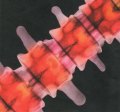
CLICK HERE to review the study
According to the authors of the study the prevalence of adolescent idiopathic scoliosis is estimated to be within 2-3% in children aged 10-16. Long-term follow up of patients with scoliosis reveal several important findings: curve progression, loss of pulmonary function, increased overall mortality, increased mortality in women due to cancer, increased prevalence of self-reported arthritis, negative perception of health, increased difficulty in basic strenuous and semi-strenuous physical tasks, more days of limitation due to sickness, injury, and other health problems, and increased prevalence and intensity of back pain.
The study’s authors point out that the available evidence presents the long-term implications of scoliosis as far more than merely a cosmetic defect, but a potentially serious impediment to a person’s long-term state of health and well-being.
“It makes perfect sense when you think about it” stated Dr. McCoy. “As chiropractors we know that spinal nerve interference can lead to all sorts of dysfunction and this is certainly true with scoliosis and other spinal curvatures.”
“Considering the fact that every single function of the body is controlled by the nervous system it should not surprise anyone that removing interference to the neurology that controls the muscles and joints of the spine would lead to improvement in the curves” remarked Dr. McCoy.
According to McCoy “All of the organs and structures of the body need a constant and uninterrupted nerve supply in order to develop and function properly. Abnormal position or movement of the spinal vertebra can develop and this can lead to nerve interference. It is this interference, called vertebral subluxations, that chiropractors correct.”
In the study, 36 children (14 patients with adolescent idiopathic scoliosis and 22 patients with 'sub-scoliotic' spinal curvatures) were checked for vertebral subluxation using x-rays of the spine. 14 subjects aged 7-16 with scoliosis of 11 degrees or higher were evaluated prior to, and after at least 2 weeks of chiropractic care. Another group of 22 subjects with 'sub-scoliotic' curves aged 2-17 with lesser curvatures of 7 to 10 degrees were also evaluated in the same manner. All subjects were patients in a private clinic in which correcting vertebral subluxation was the only method of intervention.
The scoliosis group experienced an average correction of 25.96% following an average of 5 specific spinal adjustments. The sub-scoliosis group experienced an average correction of 51.84% over an average of 6 adjustments. Six subjects in the sub-scoliosis group experienced 100% correction.
The results of this study suggest that the correction of vertebral subluxation alone is a potentially viable conservative intervention for idiopathic scoliosis and that intervention prior to the point that a patient can be considered to have a true scoliotic curve may be more effective. In other words the earlier small curves are corrected the less likely they may progress to more serious curves.
Several factors are thought to contribute to the cause of idiopathic scoliosis, including genetic, neuromuscular, hormonal, and biochemical causes. The eventual result of these being an abnormal curving of the spine. Regardless of whether scoliosis is a cause of problems such as vertebral subluxation or the end product of predisposing factors such as those listed, it is reasonable to suggest that a chiropractor be involved in management of the patient, especially one who considers the interplay of structure, motion, and neurology of the spine.
This is the largest study to date to objectively examine the results of a group of patients with adolescent idiopathic scoliosis from a random sampling in an individual practice following a treatment protocol involving specific spinal adjustment alone. The study’s authors call for more research on chiropractic subluxation and scoliosis.
